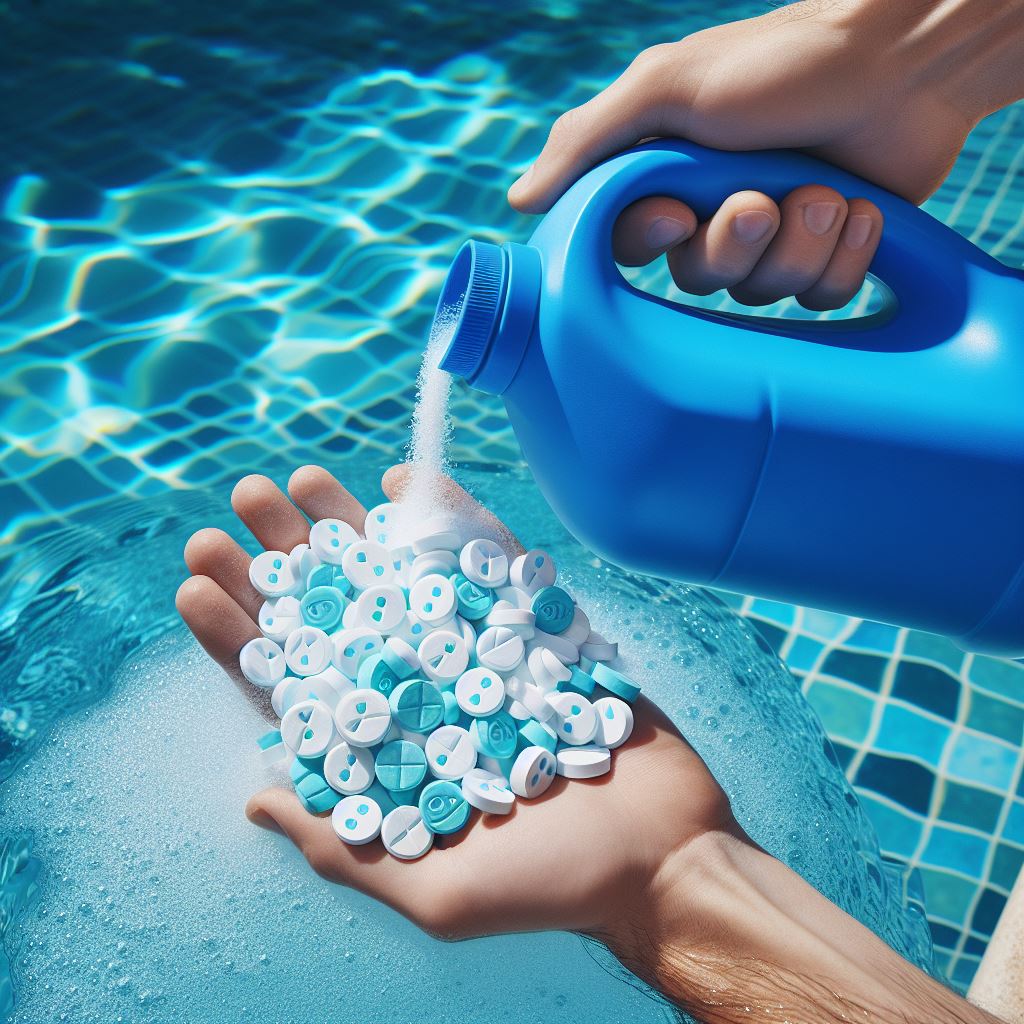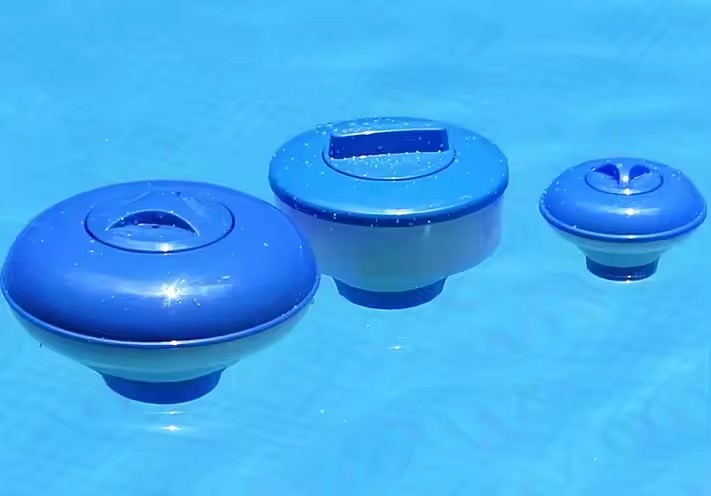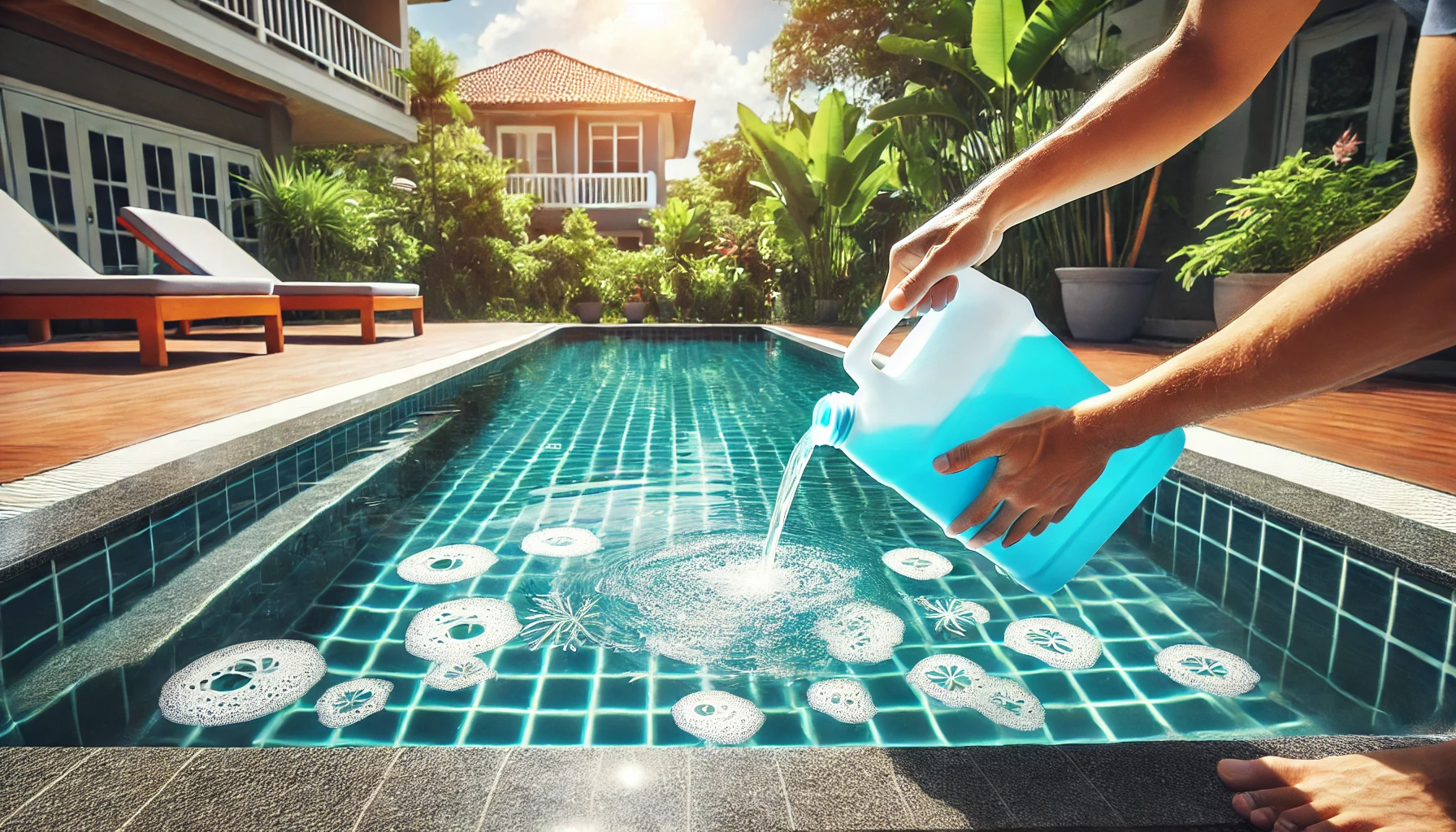Managing the chlorine levels in your pool is crucial for ensuring water safety and comfort. Chlorine not only disinfects the water, preventing bacteria and algae growth, but it also ensures the health of pool users. This article will detail the standards for chlorine levels, frequency of measurement, methods of addition, and how to choose the appropriate type of chlorine.+

Standards for Chlorine Levels
Chlorine level, measured in ppm (parts per million), is a crucial indicator of a pool’s disinfecting effectiveness. The ideal chlorine content varies depending on the type of pool and its environment:
Outdoor pools: Chlorine levels should be maintained between 0.5 to 3 ppm. Since outdoor pools are exposed to sunlight and environmental factors, this range helps effectively control microbial growth and prevent algae formation.
- Indoor pools: The recommended chlorine level is 0.5 to 1.5 ppm. Indoor pools, not being subject to direct sunlight, have a relatively lower rate of chlorine consumption.
- Spa centers: The best range for chlorine levels is between 1 and 3 ppm, considering the high temperatures and intensive use which may accelerate microbial proliferation.
Additionally, maintaining the pH between 7.2 and 7.6 is critical as deviations can affect the efficacy of chlorine. Both high and low pH levels can reduce the disinfecting power of chlorine, necessitating more frequent chemical adjustments.
Measurement and Addition Frequency
The frequency of chlorine addition depends on the pool’s usage scenario. For example, if the pool has been heavily used or affected by adverse weather, it should first be treated with chlorine shock tablets to quickly raise the chlorine level. Routine maintenance should adjust based on the following situations:
- Infrequent use: Testing the pH and chlorine levels weekly suffices. This applies to home pools or those less used during the off-season.
- Frequent use: It is advisable to test 2 to 3 times a week. This typically applies to public pools or those heavily used during the summer months.
The amount of chlorine added also needs to be adjusted accordingly. For instance, for a chlorine shock treatment, add 120 grams of chlorine granules per 10 cubic meters of water; for regular maintenance, add 40 grams per 10 cubic meters.
Choosing the Appropriate Type of Chlorine
The common types of chlorine available on the market include chlorine granules, chlorine tablets, and liquid chlorine. Choosing the right type of chlorine depends on the size of the pool and maintenance convenience:
- Chlorine granules: Suitable for pools of varying sizes, easy to adjust dosages, ideal for both shock treatments and regular maintenance. Chlorine granules dissolve quickly and disperse throughout the water, ideal for addressing immediate water quality issues.
- Chlorine tablets: More convenient for use, suitable for pools larger than 30 cubic meters. Chlorine tablets release slowly, ideal for maintaining a stable chlorine level over time, reducing maintenance frequency.
The Importance of Regular Monitoring
To avoid issues associated with either too high or too low chlorine levels, regular monitoring of the pool’s chlorine and pH levels is crucial. Insufficient chlorine can lead to algae and bacteria proliferation, while excessive chlorine may cause red eyes or itchy skin for swimmers.
Conclusion
Proper management of chlorine levels in your pool not only helps maintain clean water but also ensures the health and safety of pool users. By understanding and applying the knowledge on chlorine level standards, measurement and addition frequency, and choosing the appropriate type of chlorine, you can effectively maintain your pool in optimal condition. Regular monitoring and proper adjustments will turn your pool into a safe and clean swimming environment.


